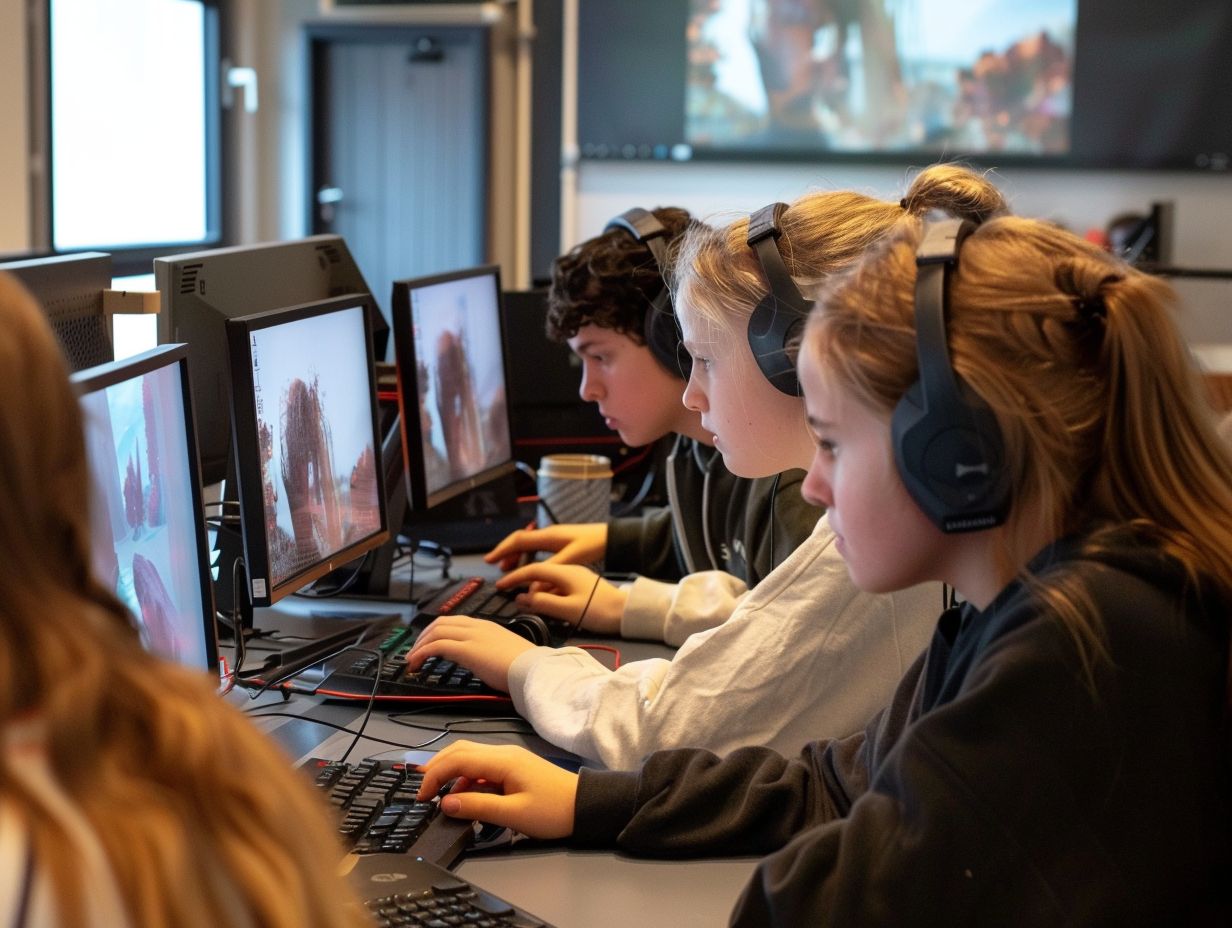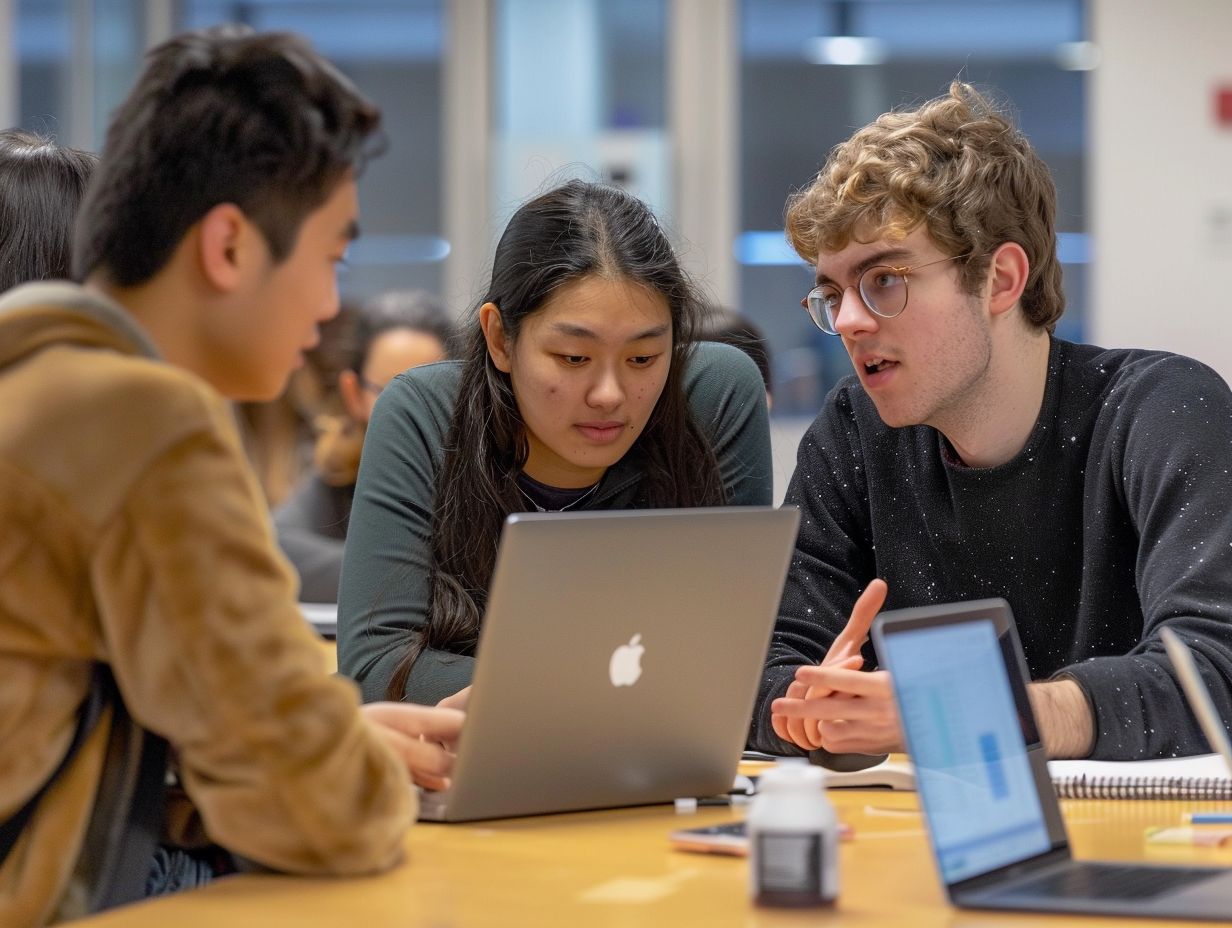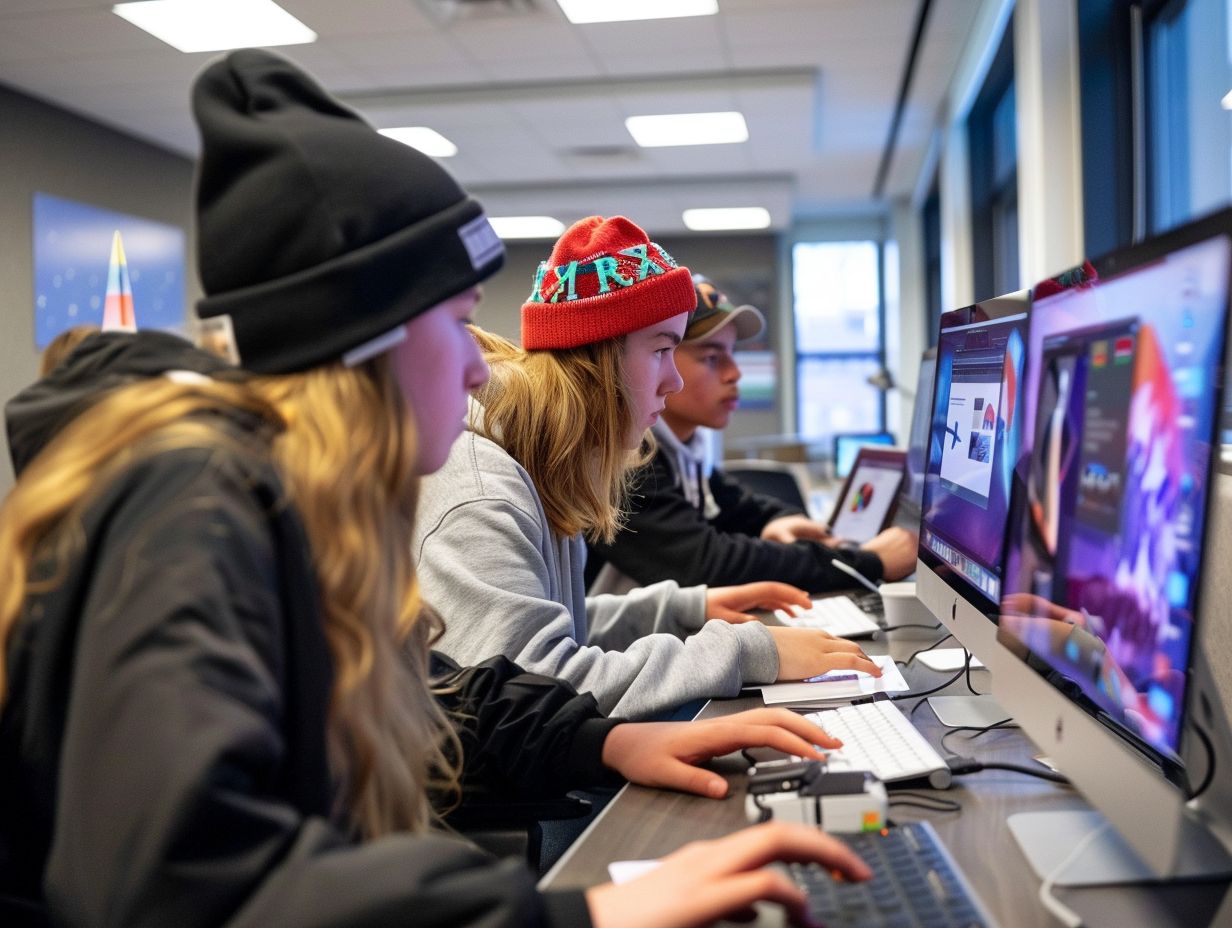Virtual technical classrooms have revolutionized the approach to education by offering you, as a student, a dynamic and interactive learning environment. Collaborative projects play a crucial role in preparing you for success in the real world, providing benefits like enhanced learning experiences and the development of teamwork and communication skills. In this article, you will explore the different types of collaborative projects, learn about the best practices for implementation, and understand the challenges and solutions that arise in virtual technical classrooms.
Key Takeaways:

- Collaborative projects in virtual technical classrooms enhance the learning experience by promoting teamwork and communication skills.
- The types of collaborative projects in virtual technical classrooms include group assignments, virtual labs, and simulations.
- Effective communication, task management, and utilizing technology tools are important for successful implementation of collaborative projects in virtual technical classrooms.
What are Virtual Technical Classrooms?
Virtual Technical Classrooms refer to online educational environments that leverage digital platforms and immersive technologies to deliver technical education to you in a virtual setting. These classrooms utilize a blend of digital tools and collaborative platforms to create interactive and engaging learning experiences for you. Through the integration of immersive technologies like virtual reality (VR) classrooms, you, as a student in engineering education, can immerse yourself in realistic simulations and practical exercises that enhance your understanding of complex technical concepts. Virtual technical classrooms cater to your needs as a modern learner by providing a flexible and interactive learning environment that adapts to your individual learning styles. By leveraging digital platforms, you can access educational resources, collaborate with peers, and engage with instructors in real-time, promoting an enriched learning experience in the field of technical education.
Benefits of Collaborative Projects in Virtual Technical Classrooms
Collaborative projects in virtual technical classrooms offer you, as a student, a plethora of benefits. These include enhanced collaboration, interactive learning experiences, and the opportunity to engage in immersive learning environments. By engaging in such projects, you can foster teamwork, receive valuable feedback, and promote inclusivity in your technical education.
Enhanced Learning Experience
Engaging in collaborative projects in virtual technical classrooms can enhance your overall learning experience. This approach provides you access to a diverse range of digital education tools that facilitate immersive learning experiences, encourage content creation, and offer accessibility features tailored to different learning styles. Integrating gamification elements within collaborative projects can add excitement and motivation for you to actively participate and learn. By including simulated experiments, you can apply theoretical knowledge in practical scenarios, deepening your understanding of complex concepts. This hands-on approach not only boosts your engagement but also helps you overcome learning challenges by making abstract concepts more tangible and easier to comprehend.
Development of Teamwork and Communication Skills
Participating in collaborative projects in virtual technical classrooms can help you develop essential teamwork and communication skills. These projects are designed to create interactive learning environments that promote engagement, effective teamwork, and the use of various educational tools to enhance your classroom experience. Interactive learning tools such as virtual whiteboards, collaborative document editing platforms, and video conferencing capabilities can facilitate communication, idea exchange, and real-time problem-solving among students. By making use of these resources, you can work together with your peers to create a dynamic and interconnected learning atmosphere. Through structured group tasks and peer-to-peer interactions, you will learn how to navigate differences, communicate clearly, and leverage each other’s strengths for mutual success. These collaborative experiences can help you develop valuable skills that are essential for your academic and professional growth.
Types of Collaborative Projects in Virtual Technical Classrooms
 In virtual technical classrooms, you will engage in various collaborative projects to enrich your learning experiences. These projects encompass group assignments, virtual labs, simulations, and virtual field trips, all designed to immerse you in the practical applications of technical concepts.
In virtual technical classrooms, you will engage in various collaborative projects to enrich your learning experiences. These projects encompass group assignments, virtual labs, simulations, and virtual field trips, all designed to immerse you in the practical applications of technical concepts.
Group Assignments
In virtual technical classrooms, group assignments involve collaborating on projects to develop practical skills and knowledge. These assignments encourage teamwork, interactive learning, and the use of engaging educational tools to address real-world challenges. By working together on group assignments, you can harness each other’s strengths and experiences, leading to a richer learning experience. Through these collaborative efforts, you can gain insights from diverse perspectives, enhancing your critical thinking abilities. These projects provide a platform for you to apply theoretical concepts to practical scenarios, fostering a deeper understanding of the subject matter. The interactive nature of group assignments cultivates communication skills, as you must effectively convey ideas, delegate tasks, and provide constructive feedback to your peers.
Virtual Labs and Simulations
In technical classrooms, you are provided with immersive learning experiences through virtual labs and simulations that simulate real-world scenarios and experiments. These tools are designed to include gamification elements, present simulated experiments, and offer challenges to enhance your technical skills and knowledge. By interacting with these virtual tools, you have the opportunity to apply theoretical concepts in a practical setting, effectively bridging the gap between classroom learning and real-world application. The interactive nature of virtual labs encourages active participation and critical thinking as you navigate through complex scenarios. These simulations also facilitate content development by enabling educators to create custom exercises tailored to specific learning outcomes. As you navigate these virtual environments, you may encounter challenges such as troubleshooting technical issues or overcoming simulation limitations. These challenges require you to adapt and problem-solve effectively, further enhancing your learning experience.
Best Practices for Implementing Collaborative Projects
Effectively implementing collaborative projects in virtual technical classrooms requires adhering to best practices that enhance student engagement and learning outcomes. You should focus on providing constructive feedback, utilizing interactive educational tools, creating a conducive classroom environment, and ensuring that the technical infrastructure supports seamless collaboration.
Effective Communication and Task Management
Effective communication and task management are essential components of successful collaborative projects in virtual technical classrooms. You must develop strong communication skills, utilize technology tools for collaboration, and practice efficient task management to ensure project objectives are met. This emphasis on communication and task management not only enhances the project outcome but also promotes valuable skills that you can carry forward into your future endeavors. By fostering effective communication, you learn to convey your ideas clearly, actively listen to others, and resolve conflicts constructively. Leveraging technology tools further streamlines collaboration by enabling real-time interactions, file sharing, and task tracking. Such practices not only improve project efficiency but also prepare you for the demands of the digital age workplace.
Utilizing Technology Tools
 Utilizing technology tools such as Google Workspace, Microsoft Teams, Flipgrid, Padlet, and Kahoot can enhance the efficiency and effectiveness of collaborative projects in virtual technical classrooms. These tools facilitate content creation, address technical issues, and provide a platform for interactive and engaging learning experiences. They offer a range of features for seamless communication, file sharing, and real-time collaboration among students and educators. Google Workspace and Microsoft Teams serve as virtual environments where students can submit assignments, participate in discussions, and receive timely feedback from teachers. These platforms play a crucial role in troubleshooting technical hitches that may arise during online classes, ensuring that the learning process remains uninterrupted. By supporting students through the initial learning curve associated with using these tools, educators enable them to explore new ways of digital collaboration and knowledge sharing.
Utilizing technology tools such as Google Workspace, Microsoft Teams, Flipgrid, Padlet, and Kahoot can enhance the efficiency and effectiveness of collaborative projects in virtual technical classrooms. These tools facilitate content creation, address technical issues, and provide a platform for interactive and engaging learning experiences. They offer a range of features for seamless communication, file sharing, and real-time collaboration among students and educators. Google Workspace and Microsoft Teams serve as virtual environments where students can submit assignments, participate in discussions, and receive timely feedback from teachers. These platforms play a crucial role in troubleshooting technical hitches that may arise during online classes, ensuring that the learning process remains uninterrupted. By supporting students through the initial learning curve associated with using these tools, educators enable them to explore new ways of digital collaboration and knowledge sharing.
Challenges and Solutions for Collaborative Projects in Virtual Technical Classrooms
Collaborative projects in virtual technical classrooms present both challenges and opportunities for you as students and educators. Addressing technical issues, managing content development, overcoming the learning curve associated with new tools, and considering the costs involved are crucial aspects that require strategic solutions to ensure successful project outcomes.
Overcoming Technical Difficulties
To ensure a seamless collaboration and learning experience for students in virtual technical classrooms, overcoming technical difficulties is essential. It is crucial to address challenges related to technical infrastructure, connectivity issues, and software compatibility for the successful implementation of collaborative projects. To optimize technical infrastructure, educators should consider providing training sessions for students on how to independently troubleshoot common issues. Implementing regular system checks and updates can help prevent technical glitches during virtual classes. Having a dedicated IT support team available to assist students and teachers in real-time can significantly reduce downtime and frustration. By proactively addressing technical challenges and cultivating a supportive learning environment, virtual technical classrooms can enhance collaborative project outcomes and contribute to overall student success.
Addressing Group Dynamics
Addressing group dynamics in collaborative projects is crucial for fostering effective teamwork and collaboration among students in virtual technical classrooms. Understanding the challenges and considerations related to group work, providing adequate support, and promoting a positive team environment are essential for achieving successful project outcomes. In virtual technical classrooms, students often encounter distinctive hurdles when engaging in group projects. These challenges may arise from communication barriers, time zone differences, or conflicting schedules, thereby complicating coordination and collaboration. To navigate these obstacles and ensure a seamless workflow, educators should implement strategies such as assigning clear roles and responsibilities, setting communication norms, and cultivating a sense of accountability within the group. By establishing a supportive and inclusive atmosphere, students can feel enableed to actively participate in group discussions, share ideas, and collaboratively work towards shared project objectives.
Frequently Asked Questions
What are collaborative projects in virtual technical classrooms?
 Collaborative projects in virtual technical classrooms involve students working together on a project using online tools and resources. These projects aim to simulate real-world teamwork and foster a sense of community and shared learning among students.
Collaborative projects in virtual technical classrooms involve students working together on a project using online tools and resources. These projects aim to simulate real-world teamwork and foster a sense of community and shared learning among students.
Why are collaborative projects important in virtual technical classrooms?
Collaborative projects promote active learning, critical thinking, and problem-solving skills. They also allow students to apply their knowledge and skills in a practical and interactive manner, preparing them for future careers in a tech-driven world.
What are the benefits of using virtual tools for collaborative projects?
Virtual tools provide a platform for students to collaborate remotely, increasing accessibility and flexibility. They also allow for seamless sharing and editing of project materials, reducing the need for face-to-face meetings and paper waste.
How can teachers incorporate collaborative projects in virtual technical classrooms?
Teachers can assign group projects that require students to work together using virtual tools such as Google Docs, Trello, or Zoom. They can also provide clear guidelines and expectations for the project and facilitate online discussions and brainstorming sessions.
What challenges may arise in collaborative projects in virtual technical classrooms?
One potential challenge is the lack of face-to-face interaction, which can make communication and coordination difficult. Technical issues or unequal contributions from group members may also arise. However, these challenges can be addressed through clear communication and regular check-ins from the teacher.
How can students benefit from participating in collaborative projects in virtual technical classrooms?
Students can develop valuable teamwork and communication skills, learn from their peers, and gain a deeper understanding of the subject through collaborative projects. They also have the opportunity to showcase their skills and creativity in a digital format, which can be shared with a wider audience.
